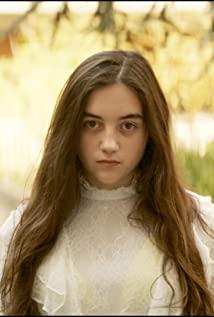Scrumping the forbidden fruit on an island near Brittany in the late 18th century, French minimalist aesthete Céline Sciamma's fourth feature PORTRAIT OF A LADY ON FIRE is an audacious sapphic testament of conspiratorial sororal solidarity and explicit sexual desire.
Young painter Marianne (Merlant), arrives on the island to be commissioned to complete a portrait of Héloïse (Haenel), daughter of the Countess (Golino), who is set to tie the knot with a Milanese nobleman. The knot is, this arranged marriage falls upon Héloïse only after her sister shockingly defies it by committing suicide, from whom she also inherits an uncooperative attitude, proclaiming that she will not sit for a portrait to her never-met future husband. Cunningly, Marianne is introduced as a walking companion for Héloïse, so that she can observe her in proximity and finish the portrait sub rosa.
Therefore, Marianne and Héloïse's story starts with a white lie, which will in due time be cleared when the two grow fonder of each other, to echo Sciamma's sobriety that there is no room for falsehood to encumber their unalloyed emotional entanglement, and extraordinarily, she also exhibits a dab hand to instigate, coalesce and concretize the warmed-over process of how two people falling for each other: their alternate, tentative gazes from one to another when they stand at the edge of the escarpment, mellow into mutual appreciation, nascent attraction through tête-à-têtes, and during the Countess's absence, the two revel in their candid, unbridled pleasure once mendacity is held at bay, optimally whipped up by a vespertine sylvan encounter with an otherworldly, soul-reaching all-female chant among bonfires,when momentarily “the lady” literally catches on fire, a visual metaphor of their fervidly ignited passion, and the ensuing consummation is par for the course.
Interpolating the Greek myth “Eurydice and Orpheus” to foreshadow the inamoratas' imminent departure, Sciamma again hit home with her artistic license to transcend the banal to something superlatively poetic, twice, Marianne is compelled to look over her shoulder and finds an eerie hologram- like Héloïse wearing a white wedding dress statically materializing out of nowhere, only to be re-enacted in her leaving day, but does Orpheus' last glimpse proactively seal the fate of Eurydice? Sciamma's poetic interpretation hints that perhaps, it is a call-and -response situation with both willingly accepting their fates of eternal separation, and cherishing the purity of love in their inner sanctums.
Above all of its sublimely and aesthetically wrought visual bravura - its Chardinian still-life tableaux (Héloïse's portraits are the works of Hélène Delmaire, and perceptibly a tad too modern for its period), the characters' emphatically monochromatic attires inhabiting a sparsely decorated ancient mansion ; a discerning eye of the natural landscape, the numinous nightly woods, cerulean ocean and choppy waves - PORTRAIT OF A LADY ON FIRE maximally formulates a progressive feminist stance that shatters the class barrier (the congenial mingling between the patrician, the intellect and the plebeian , the latter is represented by Sophie, a young maid play by Bajrami), and squashes the pro-life/pro-choice indecision (Sophie's abortion scene is ingeniously unsettling, not for its explicitness, which it is not,but a striking juxtaposition to substantiate the reason why a woman should call the shots of bringing a life into the world, and its implication is also cogently conveyed by the conspicuous absence of the siring party), not to mention the tacit understanding that Sciamma so tactfully conceals in the broad light, is Sophie in the know? What a question!
Last but certainly not the least, Merlant and Haenel's profoundly compassionate and stouthearted performances become the life-force of the whole shebang, and even in casting the duo, Sciamma is subversive enough to flout stereotypes, Merlant, who has a more traditionally upper-crust demeanor with her beady eyes and an aura of demure innocuousness, and Haenel, blessed with more blunt lineaments from which emit a tougher-to-crack forbearance, should be an apposite candidate as the talented painter, yet Sciamma's role-switching triumphantly galvanizes both actresses to broaden their acting chops and in the event, Merlant bestirs herself spunkily treading a wavering path beset by desire, secrets, elation, abandon and heartbreak, she telegraphs Marianne's every quiver of inner state palpable and riveting.
That said, for this reviewer's money, Haenel is more astonishingly persuasive as a young lady whose entire life has been blinkered by her cloistered upbringing in the nunnery, yet she manages to render Héloïse's defiance so immanent from within (remember, it is she who exhorts Marianne to regard the abortion process), Héloïse emerges as the wiser one, susses the inexorable outcome of their transitory affair, and elicits Marianne's final glimpse that eternalize their victory, not by staying together but saying adieu. Plus, Haenel also monopolizes the final 4 -minute long-take that evokes the finale of Luca Guadagnino's CALL ME BY YOUR NAME (2017), side on, submerged entirely to Vivaldi's Summer from the Four Seasons, let's all bet that Héloïse telepathically knows who is watching her across the dark theater balcony, smile, attagirl!
referential entries: Abdellatif Kechiche's BLUE IS THE WARMEST COLOR (2013, 8.3/10); Sebastián Lelio's DISOBEDIENCE (2017, 7.2/10).
View more about Portrait of a Lady on Fire reviews











